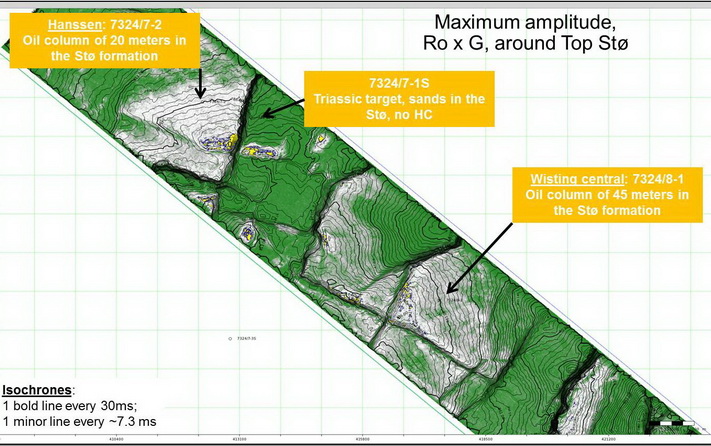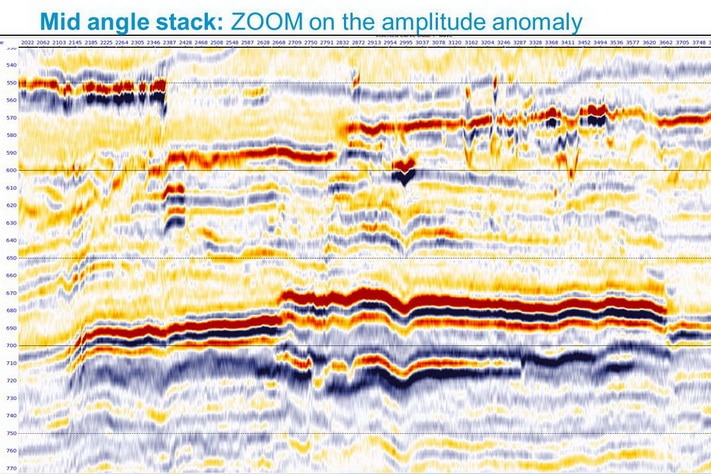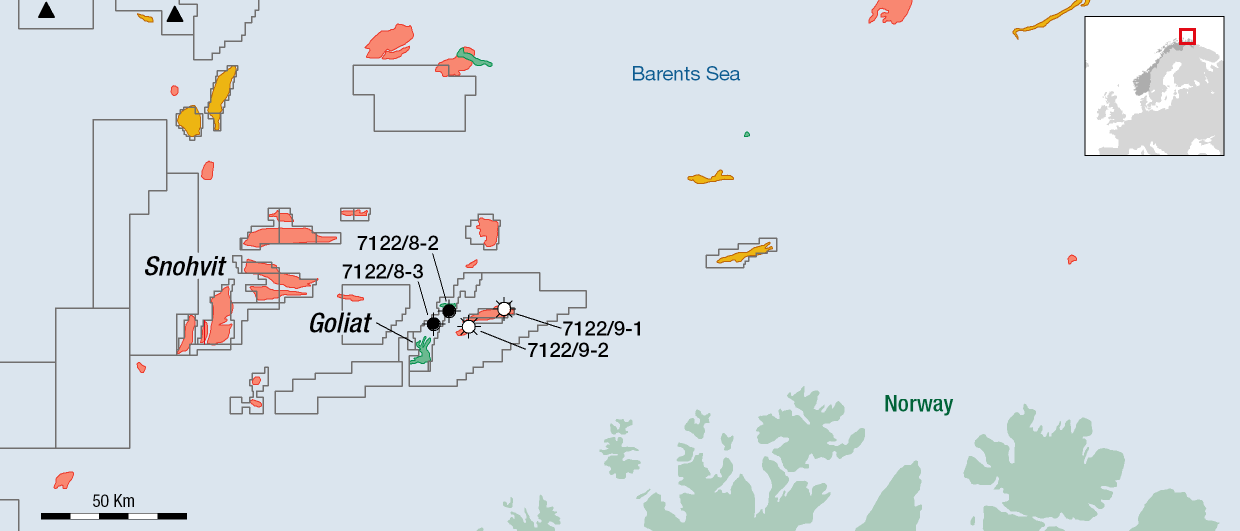“We look upon the response over the 7324/8-1 Wisting Central and 7324/7-2 Hanssen (GEO 03/2016: “La grunnlaget for oppdagelsen”) oil discoveries as a definitive proof that AVO class III can be used to distinguish between hydrocarbons and water in shallow targets in the Barents Sea,” says Erling Frantzen, VP Multi-Client & New Ventures, Scandinavia at CGG.
Frantzen refers to the use of TopSeisTM, a new, innovative seismic acquisition and imaging solution developed by Lundin Norway and CGG (GEO 05/2016: “Går bananas med ny teknologi”), that has now been successfully deployed in the Barents Sea.
Mathieu Denti, Senior Geoscientist Team Leader at CGG GeoConsulting, presented the results from a small 3D test survey on the Wisting field with enthusiasm at the NCS Exploration – Recent Discoveries 2018 conference in Oslo in May. The Wisting discovery is in a shallow faulted Jurassic block, only 200-300 m beneath the sea bed (GEO 03/2016: “La grunnlaget for oppdagelsen”).
“While the shallow location of the reservoir makes conventional acquisition inadequate because of the lack of near offsets for both imaging and AVO-analyses, TopSeis seems to be ideal in such a geological context,” Denti says.
“It turns out that AVO-anomalies can be used as a very accurate, predictive tool, as we find that the well results fit the seismic very well, without constraining the input data,” he adds. Frantzen agrees, emphasizing that the Wisting exercise is proof that TopSeis can be used for AVO-analyses with prospects at very shallow depths. “This case is very convincing,” he says.

© CGG
The next step would thus be to demonstrate how to apply AVO analyses from TopSeis to de-risk prospects before making a decision to drill a wildcat. And this is exactly what CGG did. Being aware of the intention of Aker BP to drill the 7221/12-1 Svanefjell prospect this spring, CGG acquired a single-spread, 300 m wide, sail line swath across the planned well location while sailing back from Wisting. The Svanefjell prospect was ideal as the targeted reservoir (the Snadd Formation) was known to be very shallow, only some 200 meters (!) below sea bed (geo365.no 30.05.18: “Fant gasshydrater for første gang?”).
It quickly became apparent that the prospect demonstrated a very strong seismic amplitude anomaly, potentially indicative of the presence of gas.
While waiting for the results of the wildcat, CGG used well log data from well 7222/11-1 (Caurus discovery) drilled in 2008, located 25 km away from Svanefjell, to model the response from potential gas-filled reservoirs in the Svanefjell prospect. The well proved gas in Upper and Middle Triassic formations, so it was felt to be a natural analogue to what could be the Snadd response at the prospect location.
“We looked for AVO-class III anomalies to verify the presence of huge amounts of gas, but came to the conclusion that Aker BP was unlikely to hit a thick, homogenous gas-filled sandstone reservoir,” says Denti.
“We were quite confident that we should have seen a thick sand package if it had been present,” he adds.
In late May Aker BP announced a minor discovery at the Svanefjell prospect. The well “encountered a total gas column of about 20 metres in the upper part of the Snadd formation, of which a total of 7 metres of sandstone layers with good to moderate reservoir quality”, according to the NPD press release. That also meant that the lower end of the pre-drill estimate, some 20MMboe, was correct. The high end, more than 300MMboe, would have required a massive sandstone reservoir section.
“So far, the model we made fits with the data we have available,” Denti says.
“The data gives the response it should. We have definitely demonstrated that TopSeis data gives the correct AVO-response on shallow targets that conventional seismic could not achieve”, Erling Frantzen concludes.

© CGG





